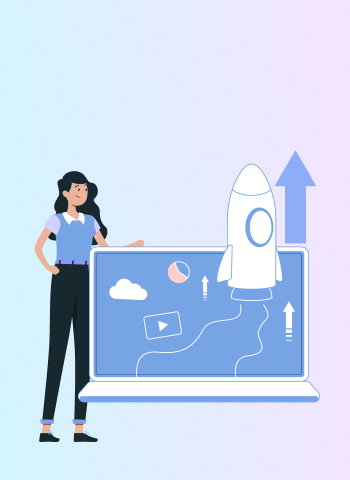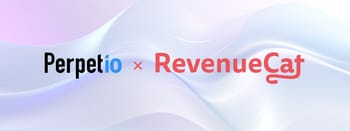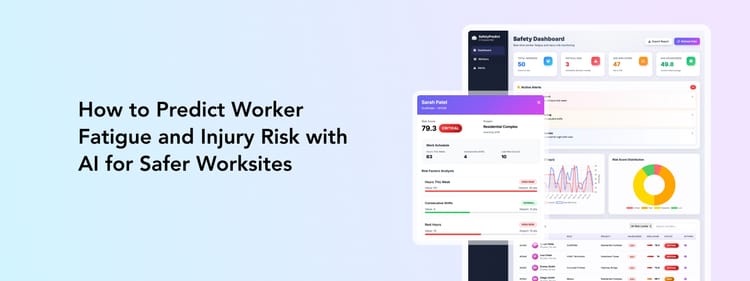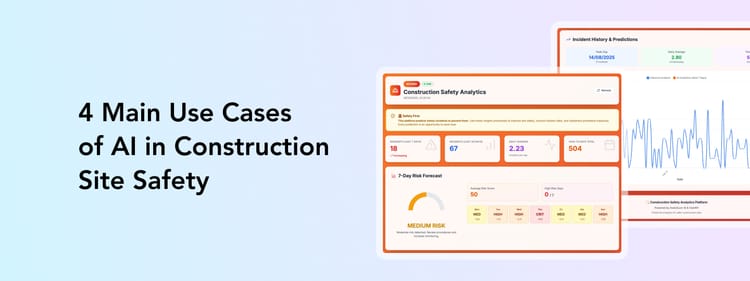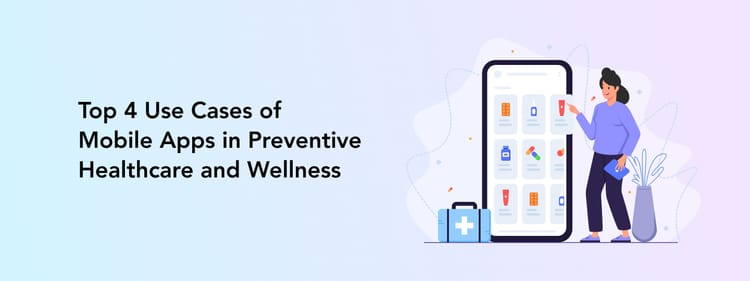The level of device interconnectivity is growing year by year. In daily life, people are connecting headphones, GPS trackers, car systems, and smartwatches to their phones for convenience. Businesses of different scales are benefiting from IoT technology that allows managing assets, enhancing safety, and saving energy.
A handy mobile app can be an all-in-one center for managing a set of connected devices and sensors. Let’s explore which layers make up an IoT app, how to develop an Internet of Things application from scratch, and how much such a solution can cost.
What is IoT in Mobile Apps?
The Internet of Things, or IoT, is a technology of interchanging data on a set of connected devices. In other words, IoT devices collect various data through sensors, like motion or temperature, and send it to a mobile application that processes and displays this information.
A mobile app is an interface that allows users to interact with the devices. For example, a user can connect or disconnect from an IoT device, view its collected data, or observe the data in real time. Plus, a user can input data to control a device, like setting a temperature, locking a door, or turning on lights.
Which Industries Can Benefit from an IoT Application?
IoT is a technology that brings benefits to virtually any industry. Among the most common IoT solutions applications are
- Green energy: Sensors in green energy resources, like windmills, allow companies to track energy production and adjust it remotely according to the predicted use level to maximize energy production efficiency.
- Real estate: Real estate owners and managers can improve maintenance flows and security measures with an IoT app. For example, it’s possible to monitor critical sensors such as water sensors in the basement, get alerts for break-ins from door sensors, or predict required maintenance works.
- Health care: IoT apps are the basic technology behind telehealth and remote patient monitoring. Doctors can view a patient's vitals, such as heart rate, blood sugar level, activity patterns, and other parameters, with wearable devices that transmit data to a doctor’s application.
- Smart home: There is no need to worry about possible water leaks, theft, or lights being on when you are away with an IoT app. Users can monitor and control their house appliances remotely, all in one mobile application.
- Logistics: Trackers in assets, trucks, and warehouses help logistics companies maximize their operational efficiency and avoid unpredictable losses. Businesses can streamline transportation, optimize shipment, and manage inventory all in one IoT app.
- Fitness and wellness: Smartwatches and fitness trackers have become synonymous with sports for many professional athletes and enthusiasts. Users can track their progress in real-time, compare their performance with previous workouts, and keep an eye on their health parameters.
- Retail: Customers of all kinds of shops can enjoy the benefits of an IoT application that can guide them to the right product and show its availability. Plus, store owners can manage their inventory, check product stock volumes, and organize the shelves without drowning in hundreds of physical products.
These are not all the applications of IoT apps: with the right business analysis beforehand, the Internet of Things technology can transform device interconnectivity into valuable insights, convenience of remote control, and added comfort for end users.
4 Layers of an IoT Mobile App
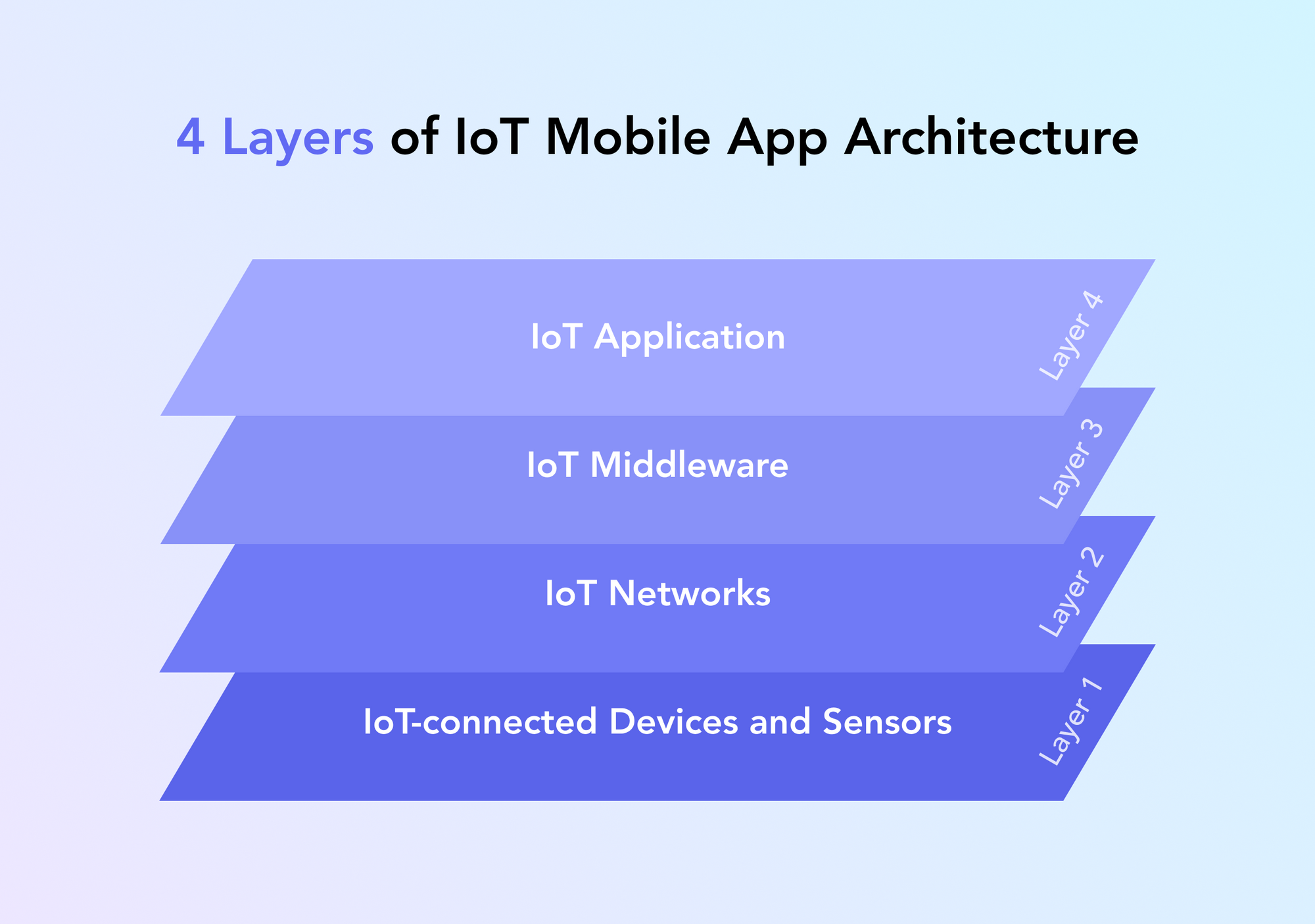
The nature of interconnectivity in any IoT application makes it more complex than your average mobile app. An Internet of Things mobile app has more layers than a usual mobile solution as it requires interaction with other devices and sensors. Don’t worry, though – with an experienced IoT mobile app development team as your partner, you won’t face any problems with establishing data exchange between sensors and the app’s interface.
Any IoT mobile application has four layers that allow users to view and control different devices remotely. Let’s explore each level to get a deeper understanding of how an IoT app functions.
Layer 1: IoT-connected devices and sensors
The first layer of an IoT application architecture is the connected sensors, devices, and actuators (e.g., motor controllers).
Connected devices contain sensors that collect data, such as temperature, motion, level, humidity, geolocation, human vital signs (e.g., heart rate), and other parameters. The data can also include video or audio. Then, the data is transmitted to the app’s interface.
This layer is also called a perception layer, as it is where all the data is collected and transmitted to the next layer, so later, users can gain insights or remotely control the device.
Layer 2: IoT networks
The data collected from the sensors and devices has to be passed on to the main application. Like any other data, IoT information can be transmitted with the help of networks.
Among the common options for IoT network connectivity are
- Wi-Fi
- Bluetooth
- Cellular networks (for example, 5G)
- Ethernet
- NFC (Near Field Communication)
- Zigbee
- LPWAN
- RFID (Radio Frequency Identification)

The choice of the network type depends on the connected device’s proximity. For example, devices like smartwatches or headphones are used in close proximity, and short-range networks like Bluetooth or Wi-Fi are a good choice, while tracking sensors work better with long-range networks, such as cellular or LPWAN.
Apart from network connectivity, IoT devices need messaging protocols to facilitate data exchange. Among protocols you can use for IoT device communication are
- DDS (Data Distribution Service)
- AMQP (Advanced Message Queuing Protocol)
- MQTT (Message Queue Telemetry Transport)
- HTTP (Hypertext Transfer Protocol)
The choice of a protocol for an IoT application depends on the message requirements (e.g., latency, reliability, bandwidth, and scalability), network infrastructure needs (such as range, topology, bandwidth, and reliability), device constraints, the security level required, and other parameters.
Layer 3: IoT middleware
Next on, the data collected from sensors on hardware and transmitted by a network, needs to be processed. The dedicated APIs will sort the data, unify its formatting, and convert it into a format that can be useful for the end user.
First, data is collected from different sources, such as the number of various sensors and devices connected to the IoT ecosystem. The unstructured data is collected in a data lake. Then, the data is structured, converted into a single format, and aggregated in one place called a data warehouse.
Cloud storage is a must for this stage as it is exactly where the data will be kept. While some IoT apps display real-time data from the sensors, many others also display historical data for users to establish patterns or review past parameters. Machine learning can be applied to IoT data analysis.
Layer 4: IoT application
Finally, users are able to view the IoT sensor data and control the devices in the mobile application. The app’s interface reflects the data in an intuitive and easy-to-understand way, like graphs. Plus, some IoT apps allow users to send requests to the connected devices too and control their functions, like switching lights on and off, changing the temperature, and more.
How to Develop an IoT App in 5 Steps
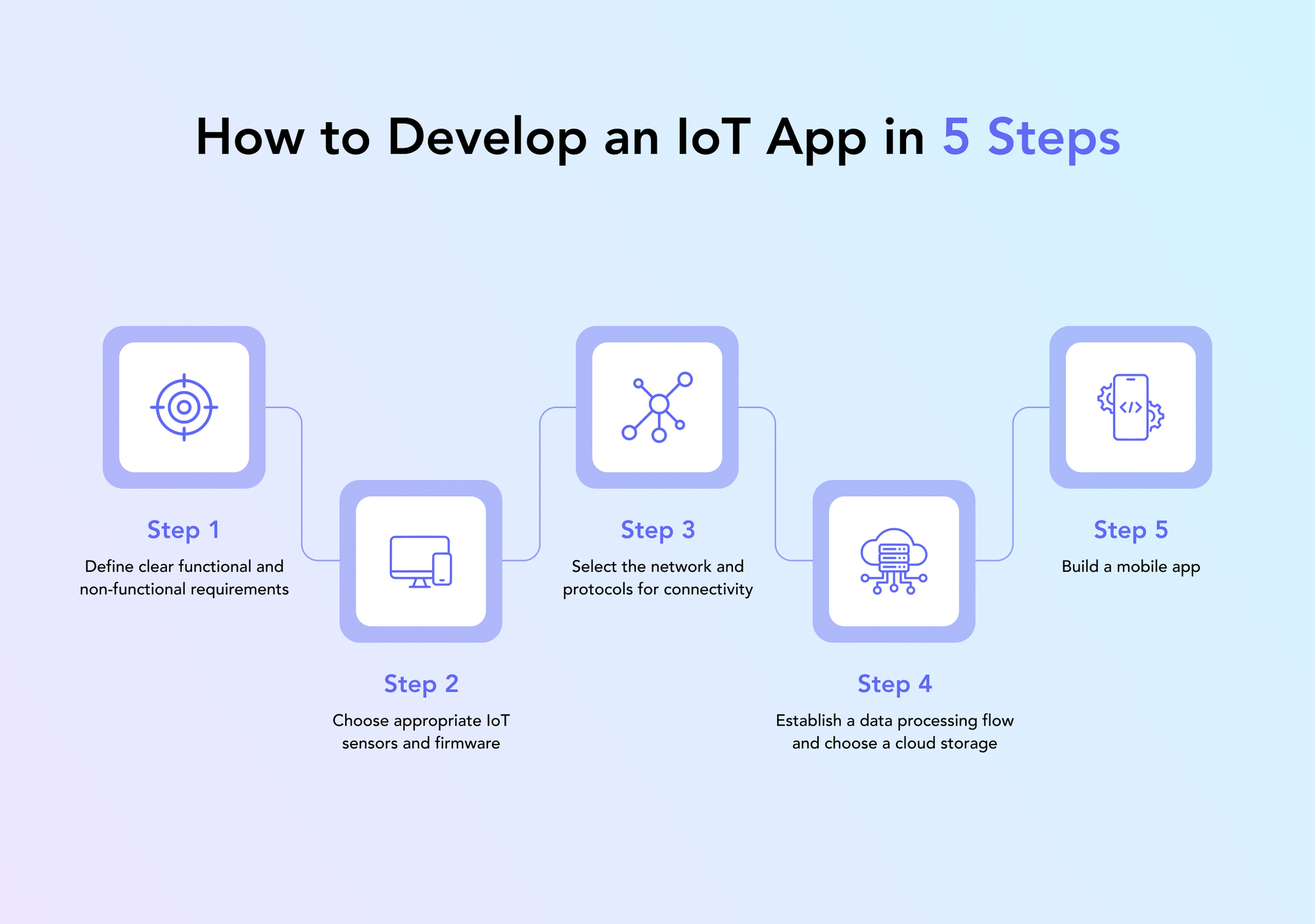
All the IoT app layers we discussed above have to be implemented step by step to complete a functional application. From writing appropriate software requirements to designing an intuitive UI for the final mobile application, an experienced app development team can undertake every step of the IoT app development process.
Let’s look into every stage of the Internet of Things app development.
Step 1: Define clear functional and non-functional requirements
Before getting started with the actual development process, it’s important that you and your technical team take time to understand what exactly the final product should look like and how it should perform all of its functions.
We have explained what functional and non-functional requirements are in a dedicated material and given examples of the requirement document. In short, during a meeting with your development team, you will go through a checklist or questionnaire with questions about your future app and its functions.
Here’s an example of questions your team might ask:
Functional requirements
- Device compatibility:
- Which IoT devices will be connected to your app?
- Are these devices compatible with common communication protocols like Wi-Fi, Bluetooth, Zigbee, or others?
- Data collection:
- What types of data will the connected devices collect?
- How frequently will data be collected from these devices?
- What is the expected volume of data generated by each device?
- User control and interaction:
- Which functions or features will users be able to control or interact with through the app?
- Will users have the ability to remotely monitor device status, change settings, or receive notifications/alerts?
- Real-time monitoring:
- Do you require real-time monitoring of device status and data?
- How quickly should the app update users with real-time information or alerts?
- Data visualization and analytics:
- Do you need data visualization tools to represent collected data in graphs, charts, or dashboards?
- Are there specific analytics or insights you wish to derive from the collected data?
Non-functional requirements:
- Performance:
- What are the expected response times for the app when interacting with connected devices or displaying data?
- How many concurrent users should the app support without experiencing performance degradation?
- Scalability:
- Do you anticipate adding more IoT devices or expanding the app's user base in the future?
- How easily can the app scale to accommodate additional devices or users?
- Security:
- What security measures are required to protect user data and ensure the integrity of communications?
- Do you need features such as user authentication, data encryption, or secure access controls?
- Reliability and Availability:
- How critical is the availability of the app and connected devices to your operations?
- Usability and Accessibility:
- How intuitive should the app's user interface be for users with varying levels of technical expertise?
- Are there accessibility considerations for users with disabilities that need to be addressed?
- Compliance and Regulations:
- Are there any industry regulations or compliance standards (e.g., GDPR, HIPAA) that the app needs to adhere to?
- What data privacy and security requirements must be met to ensure regulatory compliance?
- Integration and Interoperability:
- Does the app need to integrate with other third-party services, platforms, or APIs?
- How will the app ensure interoperability with different IoT devices and systems?
- Maintainability and Support:
- What provisions are needed for ongoing maintenance, updates, and support of the app post-launch?
- Are there any requirements for documentation, training, or user support resources?
You don’t need to know the answers to each of these questions because your technical partner can help you understand the app’s requirements and draft those according to your business needs. For example, Perpetio always provides its clients with free business and tech consulting.
Step 2: Choose appropriate IoT sensors and firmware
Choosing the right sensor type is paramount for the precision and correctness of the data gathered. Depending on the specific requirements of your IoT application, you may need various types of sensors to collect data.
Common types of sensors include temperature sensors, humidity sensors, motion sensors, pressure sensors, light sensors, proximity sensors, and gas sensors, among others. For example, for a fitness app, you would need such sensors as an accelerometer, gyroscope, heart rate monitor, GPS, barometer, and others. All these can be combined in one smartwatch or fitness band device.

It’s also critical to ensure that the sensors you choose are compatible with your chosen IoT platform or cloud service provider. The sensors should be able to communicate with the cloud using supported communication protocols and data formats. Check whether the IoT platform provides SDKs or APIs for integrating sensors and collecting data from them.
As for firmware, it is a type of software that is embedded into hardware devices to control their operation. It acts as the bridge between the hardware and the application software, allowing the hardware to perform specific functions. When choosing firmware for your IoT sensors, consider factors such as compatibility with the sensors, support for communication protocols, reliability, and security features.
Step 3: Select the network and protocols for connectivity
After deciding on your hardware and firmware choices, time to consider how these will be transiting the data they collect to the cloud. As we discussed above, there are several network options, such as Wi-Fi, Bluetooth, cellular networks, and others.
When selecting the network and protocols for your IoT fitness app, consider factors such as power consumption, data transmission speed, range, security, and compatibility with existing infrastructure. Your technical partner can recommend a suitable connectivity option based on the amount and type of data your sensors will collect and the device's proximity to the user’s smartphone.
Step 4: Establish a data processing flow and choose a cloud storage
Once you've selected the network and protocols for connectivity, it's essential to establish a data processing flow and choose appropriate cloud storage solutions to handle the data generated by IoT devices. Here's how to proceed.
First of all, your team needs to work on the data processing flow. This stage includes several processes, such as
- Defining data collection points: You need to identify the key data points to be collected from IoT sensors or devices, such as heart rate, steps taken, calories burned, etc., based on the requirements of your app.
- Data acquisition: Implement data acquisition mechanisms to retrieve sensor data from IoT devices using the selected network and protocols. This may involve setting up data ingestion pipelines or APIs to receive real-time data streams.
- Data preprocessing: Preprocess the raw sensor data to clean, filter, and transform it into a structured format suitable for analysis.
- Real-time processing: In some cases, you would need to implement real-time processing pipelines to handle streaming data from IoT devices, enabling instant analysis and response to critical events or anomalies.
- Batch processing: If you want to show your users historical data, batch processing pipelines are needed to enable long-term trend analysis, predictive modeling, or batch reporting.
Next on, there are some choices to be made concerning cloud storage solutions.
- Choosing a cloud provider: Select a cloud provider that offers scalable and reliable storage services to store IoT data securely. Popular options include Amazon Web Services (AWS), Microsoft Azure, Google Cloud Platform (GCP), or IBM Cloud.
- Selecting storage services: Choose appropriate storage services provided by the cloud provider, such as object storage (e.g., Amazon S3, Google Cloud Storage), relational databases (e.g., Amazon RDS, Azure SQL Database), NoSQL databases (e.g., Amazon DynamoDB, Azure Cosmos DB), or data lakes (e.g., Amazon S3 Glacier, Azure Data Lake Storage).
- Ensuring data security and compliance: Make sure that the selected cloud storage solutions comply with industry regulations and data privacy standards (e.g., GDPR, HIPAA) to protect sensitive user data collected by IoT devices. Implement encryption, access controls, and auditing mechanisms to secure data at rest and in transit.
By establishing a robust data processing flow and choosing reliable cloud storage solutions, you can effectively manage and analyze the vast amounts of data generated by IoT devices in your app. This enables you to derive actionable insights, improve user experiences, and drive business value from your IoT application.
Step 5: Build a mobile app
Building a mobile app for your IoT solution is the final step in the development process. It involves translating the gathered requirements and design concepts into a fully functional application that delivers a seamless and engaging user experience.
During this stage, you'll need to decide on your app’s platform. You can choose between iOS and Android or go for both platforms for a wider reach. Cross-platform frameworks like React Native or Flutter offer the advantage of writing code once and deploying it on both iOS and Android, which can significantly reduce development time and effort.
Thorough testing and debugging are essential to identify and fix any issues or bugs before deploying the app to app stores.
How Much Does it Cost to Develop an IoT App
The cost of developing an IoT app can vary significantly based on various factors such as project complexity, app type, desired feature scope, and development timelines. Here's a breakdown of estimated costs for developing IoT apps across different categories:

These estimates are based on average industry rates and may vary depending on specific project requirements and your chosen development partner. To get a more accurate cost estimation for your IoT app development project, consult with Perpetio.
Consider Perpetio Your Trusted Partner
At Perpetio, we understand that developing an IoT app is not just about coding; it's about crafting a solution that aligns with your business objectives and sets you up for success in the long run. That's why we offer more than just development services – we provide free consulting to help you define clear project goals and navigate the complexities of IoT app development.
We care about your overall business success and take a holistic approach to help your app thrive in the market. Whether it's refining your app strategy, optimizing user experiences, or scaling your solution for future growth, we're dedicated to helping you reach your business goals and maximize your ROI.
When you choose Perpetio as your development partner, you're not just getting a team of skilled engineers – you're getting a trusted ally who's invested in your success every step of the way. Let's work together to bring your IoT app idea to life and unlock its full potential in the digital landscape.

